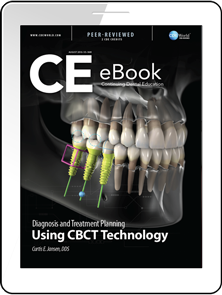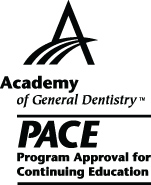CDEWorld > eBooks > Diagnosis and Treatment Planning Using CBCT Technology


ADA CERP is a service of the American Dental Association to assist dental professionals in identifying quality providers of continuing dental education. ADA CERP does not approve or endorse individual courses or instructors, nor does it imply acceptance of credit house by boards of dentistry. Concerns or complaints about a CE provider may be directed to the provider or to ADA CERP at www.ada.org/cerp/

Approved PACE Program Provider. FAGD/MAGD credit. Approval does not imply acceptance by a state or provincial board of dentistry, or AGD endorsement. 1/1/2023 to 12/31/2028. ID # 209722.
eBook
Released: Wednesday, August 24, 2016
Expires: Thursday, August 31, 2017
Diagnosis and Treatment Planning Using CBCT Technology
By Curtis E. Jansen, DDS
Commercial Supporter: KaVo Dental
Cone-beam computed tomography (CBCT), which uses a fraction of the radiation dose of medical CT, offers general practitioners many advantages, some of which they may be unaware. Its use for diagnosis and treatment planning in tooth removal, implant, endodontic, orthodontic, temporomandibular joint disorder, and obstructive airway cases is well known. But general practitioners should know that beyond diagnosing fractures, tooth/ root anomalies, and assessing hard tissue before and after implant placement, this extraoral 3-dimensional technology can be used to perform more common diagnostic tasks, such as panoramic x-rays and bitewings. When used in place of intraoral sensors, it spares patients the discomfort of the rigid sensor. CBCT can also be used to help clinicians create digital versions of their conventional impressions and poured models for digital transmission to other dental team members. For practitioners who place implants—as an ever-increasing number are—CBCT provides the ability to do “top-down treatment planning” to offer patients restorative-based implant placement.
LEARNING OBJECTIVES:
-
Discuss the primary uses of CBCT for diagnostic purposes in a general dental practice
-
Explain how CBCT is used for implant treatment planning
-
Understand the advantages of CBCT as part of the digital workflow
-
Address prospective concerns about radiation exposure
About the Author
Curtis E. Jansen, DDS
Private Practice, Monterey, California


